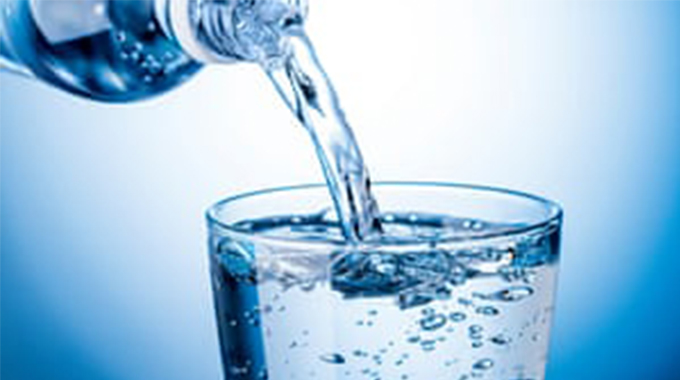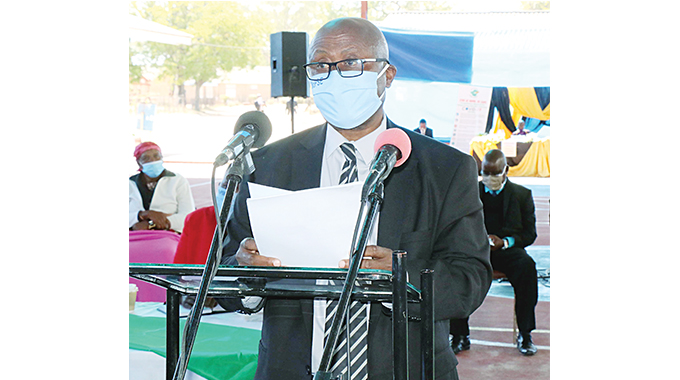Water rationing and diarrhoea risk

Dr Tatenda Simango
I hope I find you well and in good spirits. We have had an alarming increase of Covid-19 cases in the past week. We encourage you to maintain social distancing and limit unnecessary travel. Regular hand washing with soap and water and/ or sanitisation is paramount.
If we all play our part, we reduce the risk of having another full lockdown. I strongly discourage the reopening of public gathering activities: religious, academic and social. The situation has been compounded by the water rationing schedule introduced.
The erratic water supply in Bulawayo is a ticking time bomb. It could have chosen a better time to come, when we are not fighting the Covid-19 pandemic, and high standards of hygiene should be maintained. This erratic water supply also increases the risk of diarrhoeal diseases.
Diarrhoea is a condition where one has increased water in stool, which produces thin or loose watery stool. Blood, mucus or pus could be contained in the stool. Other symptoms include nausea and vomiting, high temperature, at times constipation, stomach pains and weight loss. This can be acute (short duration) or chronic (more than two weeks).
Diarrhoea spreads via a faecal oral transmission (ingestion of contaminated stool particles) through food, water or close contact with an infected person.
Diarrhoea tends to be more severe in children. Where symptoms may differ; dark urine with fewer wet diaper changes, no tears when crying, reduced skin turgor (pinch skin and it goes back slowly) and rapid heart-beat. Severe signs of diarrhoea in children include:
– failing to drink or breastfeed,
– vomiting everything,
– convulsing or fitting,
– periods of not breathing,
– lethargy or unconscious,
– sunken eyes or sunken fontanelle (soft part of a baby’s head).
Common causes of diarrhoea include infection, alcohol, laxative abuse, medical conditions like diabetes and drugs like antibiotics. Two infamous infective diarrhoeal causative agents in Zimbabwe are cholera and typhoid.
Typhoid is caused by a bacterium called salmonella typhi. It is more prevalent where hand washing is less frequent. If untreated it can be fatal. Some people carry the bacteria without developing symptoms. The symptoms are high temperature, up to 40 degrees Celsius, rash, diarrhoea or constipation and abdominal pains, weakness and headaches.
Cholera is an acute rice watery diarrhoea, with or without vomiting causing severe dehydration or death. The infective agent is a bacterium called vibrio cholerae. Symptoms may take 12 hours to five days to show, it may kill within hours if untreated. Fluid replacement with oral rehydration solution is the primary treatment.
We shall discuss ways of disinfecting water that can be implemented in the home. However, some chemical pollutants, such as fluoride and arsenic, are naturally occurring in ground water. Other pollutants can find their way into water through man-made activities such as overuse of fertilisers in water catchment areas, indiscriminate discharge of aquifers, environmental pollution.
Boiling or disinfection will not destroy other contaminants, such as heavy metals, salts and most other chemicals. These can only be removed at water treatment plants.
It is easy to filter water using cloth. This is essential for pre-treatment purposes. This kind of filtration will eliminate the main solid impurities from water as well as any insect larvae that it may contain. The cloth used, cotton preferably, must be thick enough to properly retain the impurities. If it is too thick, then filtration will take longer. The cloth must always be washed prior to use. Straining alone is not a sufficient form of treatment as water is not drinkable if already contaminated.
Pre-treatment sand filters serve the same purpose as straining water through cloth. It is generally more effective in providing pre-treatment for chlorination or boiling disinfection methods.
Boiling is relatively easy to do. It will kill all of the germs and micro-organisms present in the water. To do so, first filter or decant the water, then bring it to a rolling, bubbling boil (simply steaming water does not mean its boiled) for at least two minutes. Boiled water may lack taste. This problem can be solved by vigorously shaking the water to re-oxygenise it or by adding a little salt.
Chlorination is a simple and effective way to disinfect water to make it drinkable. It comprises of introducing chlorinated products (chlorine tablets, bleach, etc.) into the water to kill the micro-organisms contained in it. After the products have acted for 30 minutes, the water will be drinkable. It remains so for a few days (depending on storage conditions) thanks to the non-volatility of the chlorine. Muddy water can be made drinkable. If the treatment is done properly, all of the pathogens are eliminated. Chlorination has a durable effect.
Diarrhoeal prevention measures are good hand washing and hygiene. Wash all fruit and vegetables before consumption. Make sure all foods are thoroughly cooked and served steaming hot. Do not eat raw meat or eggs.
When one contracts a diarrhoeal attack, oral rehydration with any home fluids including water, tea, thin porridge, mahewu can be used. Avoid cold drinks with high sugar content. Oral is better than intravenous rehydration. Continue breastfeeding in babies.
Zinc has been seen to reduce the duration of the diarrhoea. Antibiotics must be avoided if there is no infection. The best rehydration solution is sugar salt solution where six level teaspoons of household sugar (white or brown) is added to half teaspoon of salt (coarse salt may be ground to be fine) and be dissolve in 100 ml of clean water.
Till next week stay safe.
Dr Tatenda Simango can be contacted on [email protected] or follow him on Facebook @ 9th Avenue Surgery.











Comments